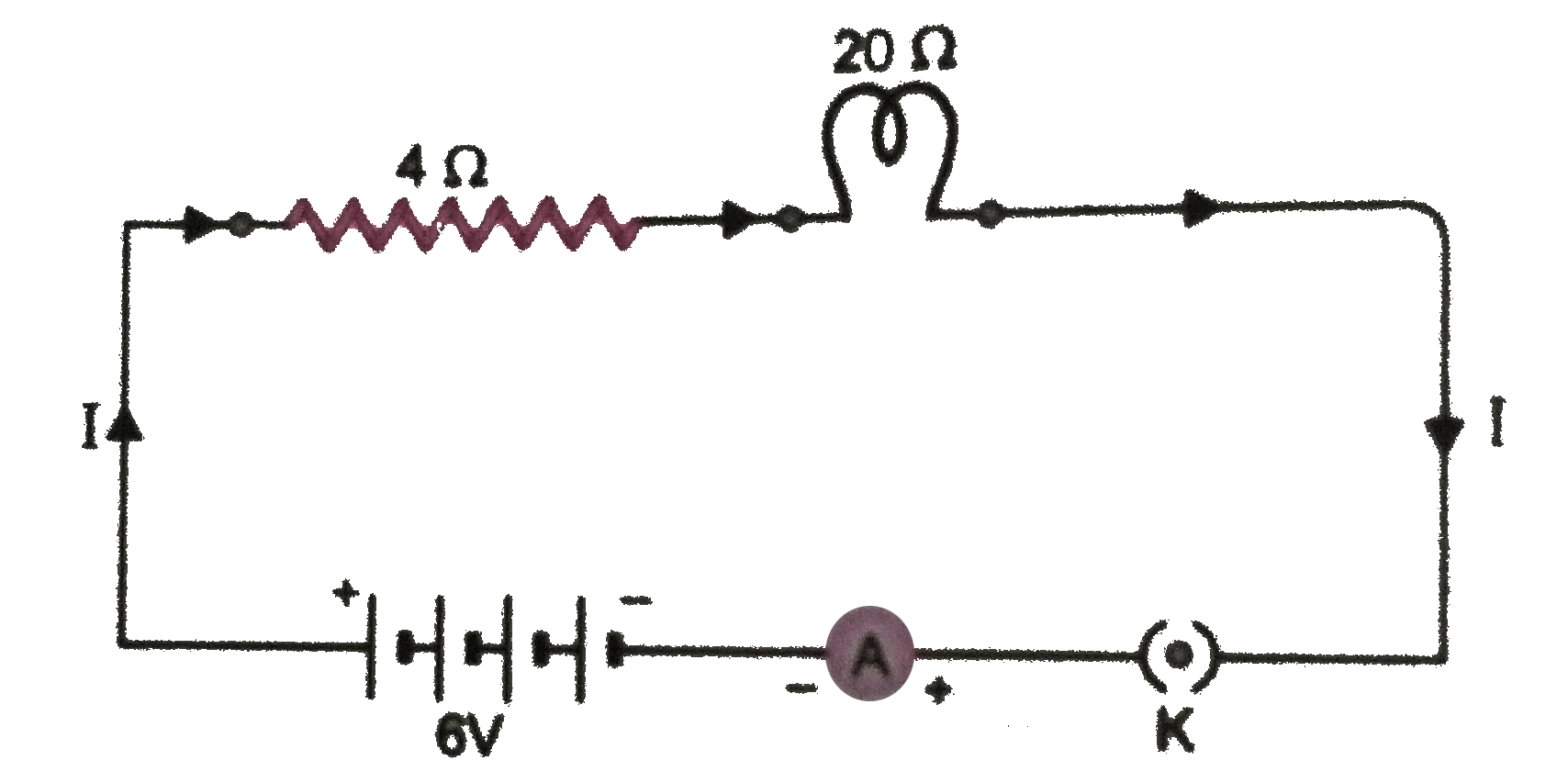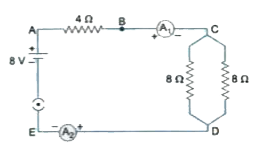Find the resistance of a conductor if the electric current flowing through it is 0.35 A when the potential difference across it is 1.4 V.
To find the resistance of a conductor given the electric current and the potential difference across it, we can use Ohm's Law. Ohm's Law states that:
V=I×R
Where:
- V is the potential difference (voltage) in volts (V),
- I is the current in amperes (A),
- R is the resistance in ohms (Ω).
1. Identify the given values:
- Current (I) = 0.35 A
- Voltage (V) = 1.4 V
2. Write down Ohm's Law:
V=I×R
3. Rearrange the formula to solve for resistance (R):
R=VI
4. Substitute the known values into the equation:
R=1.4V0.35A
5. Calculate the resistance:
R=1.40.35=4Ω
6. State the final answer:
The resistance of the conductor is 4Ω.
- V is the potential difference (voltage) in volts (V),
- I is the current in amperes (A),
- R is the resistance in ohms (Ω).
- Current (I) = 0.35 A
- Voltage (V) = 1.4 V
V=I×R
R=VI
R=1.4V0.35A
R=1.40.35=4Ω
The resistance of the conductor is 4Ω.
Similar Questions
What would be the resistance of a conductor if the current flow through it is 0.35 A when the potential difference across is 1.4 V?
View SolutionIn the circuit diagram given alongside, find:
(i) total resistance of the circuit,
(ii) total current flowing in the circuit, and
(iii) the potential difference across R1

View Solution
Knowledge Check
How much current is flowing through a 1kΩ resistor when a potential difference of 2 V is applied across its end ?
A2μAB2mAC2AD1AAssertion : Potential measured by a voltmeter across a wire a always less than actual potential difference across it.
Reason : Finite resistance of voltmeter changes current flowing through the resistance across which potential difference is to be measured.AIf both assertion and reason are ture and reason is the correct explanation of assertion.BIf both assertion and reason are true but reason is not the correct explanation of assertion.CIf assertion is true but reason is false.DIf assertion and reason both are false.The flow of the electric current through a metallic conductor is
Aonly due to electronsBonly due to +ve chargesCdue to both nuclei and electrons.Dcan not be presicted
How much current is flowing throught a 1kΩ rsistor when a potential difference of 2V is applied across its end ?
View SolutionAn electric lamp, whose resistance is 20Ω and a conductor of 4Ω resistance are connected to a 6V battery as shown in (Fig. 3.18) Calculate.
(a) the total resistance of the circuit,
(b) the current through the circuit, and
( c) the potential difference across the electric lamp and the conductor.
 .
.
View SolutionFind out the following in the electric circuit given in figure alongside:

(a) Effective resistance of two 8Ω resistors in the combination
(b) Current flowing through4Ω resistor
(c) Potential difference across 4Ω resistance
(d) Power dissipated in 4Ω resistor
(e) Difference in ammeter readings, if any
View SolutionFind out the folowing in the electric circuit given in (Fig.
(a) Effective resistance of two 8Ω resistors in the combination
(b) Current flowing through 4Ω resistor
( c) Potential difference across 4Ω resistance
(d) Power dissipated in 4Ω resistor
(e) Difference in ammeter readings, if any.
 .
.
View Solution(a) The components of an electric circuit are 0.5 m long nichrome wire XY, an ammeter, a voltmeter, four cells of 1.5 V each, rheostat and a plug key. Draw a circuit diagram to study the relation between potential difference across the terminals X and Y of the wire and current flowing through it.
(b) State the law that relates potential difference across a conductor with the current flowing through it.
View Solution
